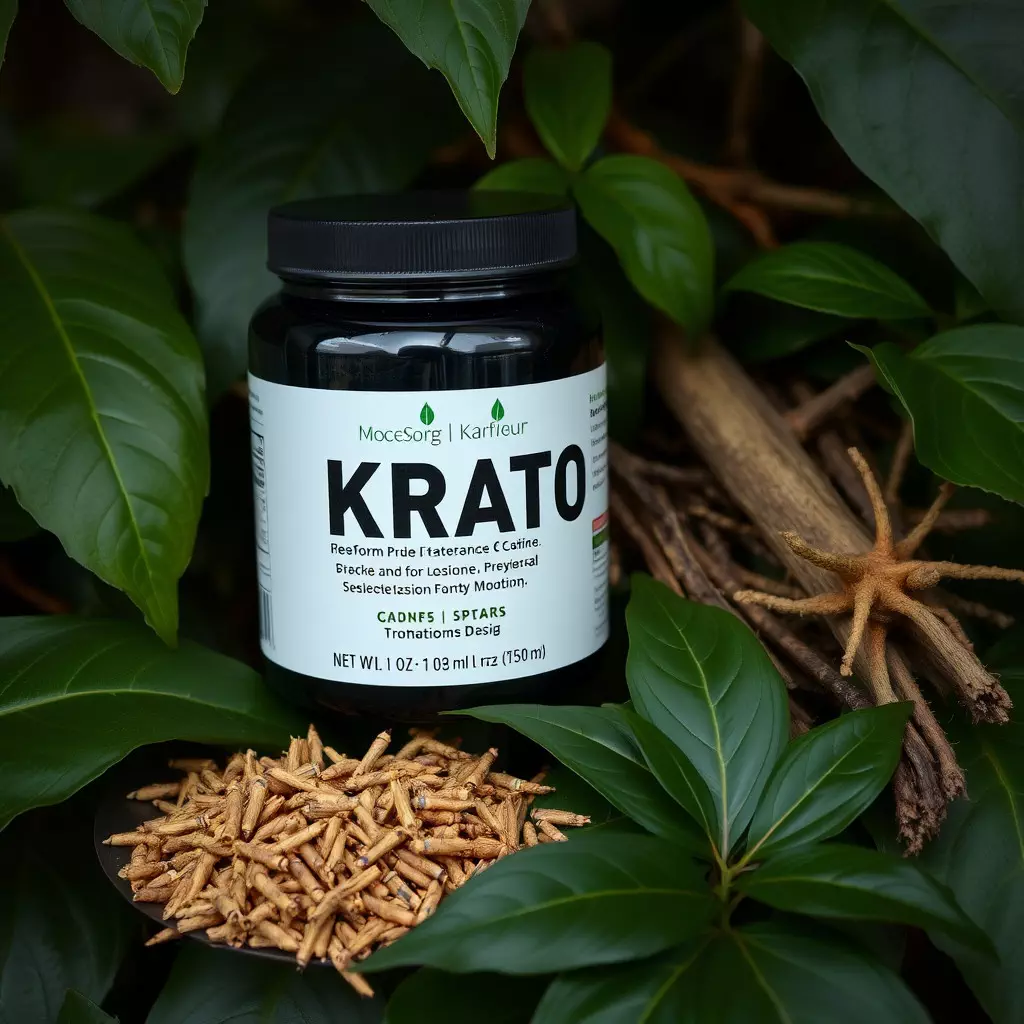Kratom, also known as B herb from its scientific name Mitragyna speciosa, is a natural supplement that has gained attention for its pain-relieving properties. It interacts with opioid receptors and affects neurotransmitters like serotonin and norepinephrine, offering potential for both acute and chronic pain relief. The efficacy of B herb varies among different strains, such as Indo, Thai, Bali, Maeng Da, Borneo, and Sumatra, each with distinct alkaloid compositions that influence their effects. For instance, Indo strains may be more sedating, useful for pain accompanied by anxiety or sleep issues, while Thai strains are more stimulating, beneficial for sustained alertness alongside pain management. Maeng Da is particularly noted for its balanced alkaloids providing pain relief and mood enhancement. It's crucial to approach kratom with caution, considering individual sensitivities and the legal status in different regions. Consultation with healthcare professionals is essential before incorporating B herb into a health regimen, given its complex interactions with other medications and potential side effects. For those exploring B herb for pain management, it's important to monitor personal responses and combine its use with holistic practices like meditation, exercise, and proper nutrition for optimal results.
Exploring the natural pathways to pain relief, this article delves into the potential of kratom supplements, scientifically known as B herb, for effective analgesia. We will dissect how different strains of kratom can be harnessed for pain management, and provide guidance on safely integrating these options within a broader holistic approach to wellness. Join us as we navigate the therapeutic properties of kratom, ensuring readers are well-informed on its impact on alleviating discomfort.
- Unlocking the Potential of Kratom as a Natural Analgesic: An Overview of B Herb's Role in Pain Management
- Understanding Kratom Strains and Their Impact on Pain Relief
- Integrating Kratom into a Holistic Pain Management Plan: Dosage, Precautions, and Complementary Therapies
Unlocking the Potential of Kratom as a Natural Analgesic: An Overview of B Herb's Role in Pain Management

Kratom, scientifically known as Mitragyna speciosa, has garnered attention in the realm of natural pain management due to its active alkaloids which interact with the body’s opioid receptors. As a member of the coffee family, this tropical evergreen tree originating from Southeast Asia offers a wealth of potential through its leaves, commonly referred to as B herb, a term that reflects its botanical categorization and traditional use. The pain-relieving properties of B herb are attributed to its ability to influence neurotransmitters like serotonin and norepinephrine, which can enhance mood and alleviate discomfort. Users often report relief from both acute and chronic pain conditions when B herb is ingested, highlighting its versatility as a natural analgesic.
Incorporating B herb into a pain management regimen should be approached with consideration of dosage and individual sensitivities, as the effects can vary significantly among users. The alkaloid profile of kratom strains can differ greatly, influencing the potency and type of relief experienced—from mitigating the sharp sting of neuropathic pain to soothing the deep ache of musculoskeletal issues. It’s crucial to consult with healthcare professionals when considering B herb as part of one’s health strategy, especially given its potential for interaction with other medications and its regulatory status in various countries. As research continues to unfold, the role of B herb in natural pain management remains a subject of growing interest and promising exploration for those seeking alternative solutions.
Understanding Kratom Strains and Their Impact on Pain Relief

Kratom, a botanical herb (Mitragyna speciosa) native to Southeast Asia, has garnered attention in natural pain management circles due to its alkaloid profile that can influence pain relief. This herb is known for its diverse strains, each with distinct effects and potential benefits for those seeking alternative solutions to manage chronic or acute pain. The two primary strains of kratom are the Indo (Indian) and the Thai strains, with further classifications such as Bali, Maeng Da, Borneo, and Sumatra, among others.
The impact of kratom strains on pain relief is strain-specific, influenced by the concentration of alkaloids like mitragynine and 7-hydroxymitragynine. For instance, Indo strains are often associated with sedative effects, which can be beneficial for managing pain accompanied by anxiety or insomnia. On the other hand, Thai strains tend to offer a more stimulating effect, which might be preferable for individuals who need to maintain alertness while managing their discomfort. The B herb strains, particularly Maeng Da, are renowned for their balanced alkaloid content, providing both pain-relieving and uplifting properties without the sedative qualities found in Indo strains. Users often experiment with different strains to find the most effective one for their unique pain conditions, with careful consideration of how each strain may interact with their body’s response to pain. It is crucial for those considering kratom as a natural pain management tool to consult healthcare professionals and thoroughly research the various strains, their effects, and any potential interactions with other medications or health conditions. Understanding kratom strains and their nuanced impact on pain relief can empower individuals to make informed decisions about incorporating this botanical herb into their holistic pain management plan.
Integrating Kratom into a Holistic Pain Management Plan: Dosage, Precautions, and Complementary Therapies

Kratom, derived from the leaves of the Mitragyna speciosa tree, is a botanical herb that has gained attention in holistic pain management strategies. When integrating kratom into a comprehensive pain relief plan, it’s crucial to consider dosage and precautions to ensure safety and efficacy. Dosages can vary widely based on individual factors such as body weight, tolerance, and the specific strain of kratom used. It is advisable to start with a low dose to gauge effects before gradually increasing as needed. For pain management, strains like Maeng Da or Bali are often preferred for their analgesic properties.
In addition to careful dosing, complementary therapies can enhance the benefits of kratom. Practices such as mindfulness meditation, gentle exercise, and maintaining a balanced diet support overall well-being and may contribute to a more effective pain management regimen. It’s also important to consult with healthcare professionals before incorporating kratom into your health routine, especially if you have existing health conditions or are taking other medications. Regular monitoring of your pain levels and how they respond to kratom can help fine-tune the approach for optimal results. By combining kratom with these holistic practices, individuals may find a more harmonious and sustainable way to manage chronic pain.
In conclusion, the exploration of kratom’s potential as a natural analgesic through the lens of B Herb presents a promising alternative for those seeking pain relief without relying solely on traditional pharmaceuticals. The diversity of kratom strains and their distinct effects offers users a personalized approach to managing pain. It is imperative, however, to integrate such supplements into a comprehensive holistic pain management plan, which includes careful dosage and consideration of complementary therapies. As with any health-related decision, consulting healthcare professionals is essential for safe and effective use of kratom. By doing so, individuals may harness the natural benefits of B Herb while navigating their path to wellness and pain relief.






